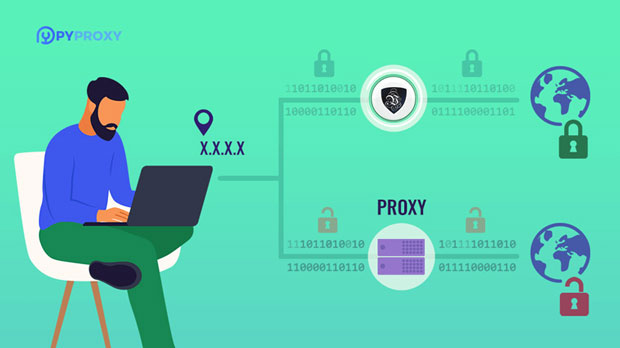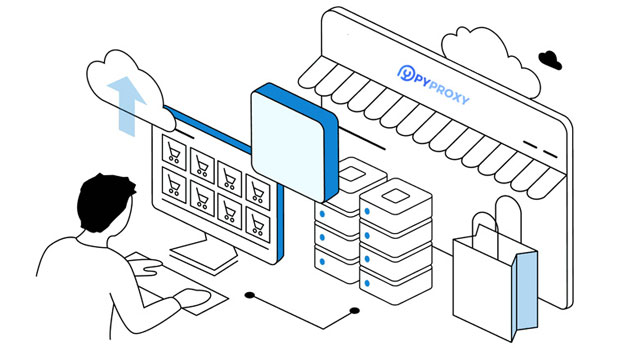What is the purpose of an IP proxy address?
An ip proxy address plays a crucial role in the digital landscape, providing a gateway for users to mask their original IP address while interacting with the internet. This function of routing internet traffic through an intermediary server ensures greater privacy, security, and anonymity. Additionally, it helps overcome geographical restrictions, access region-locked content, and manage online activities more effectively. For businesses and individuals alike, the use of an IP proxy address is a valuable tool for maintaining control over their digital footprint and enhancing their online experience. In this article, we will explore the various advantages of using an IP proxy address, including how it benefits privacy, security, access control, and more. Understanding the Basics of an IP Proxy AddressBefore diving deeper into the practical advantages, it's essential to first understand what an IP proxy address is. In simple terms, an IP proxy serves as an intermediary server between a user's device and the internet. When a user requests data or visits a website, the proxy server processes the request, fetches the required information, and then forwards it back to the user. During this process, the proxy server uses its own IP address, instead of the user's original address, to access websites. This process hides the user's true location and identity from the websites they visit, providing a layer of anonymity.Enhancing Privacy and AnonymityOne of the most prominent reasons individuals and businesses use IP proxy addresses is to enhance privacy and anonymity online. With increasing concerns about data privacy and surveillance, protecting one's personal information has become more crucial than ever. By masking a user's real IP address, an IP proxy helps conceal their location and identity, preventing third parties from tracking online activities.In particular, ip proxies are essential for avoiding targeted advertising and data profiling. Many websites use cookies and other tracking technologies to monitor users' browsing behavior, and subsequently, tailor advertisements based on this data. By routing traffic through an IP proxy, users can avoid such practices, maintaining a higher level of privacy and reducing unwanted exposure.Improved Security and Protection from Cyber ThreatsSecurity is another key benefit of using an IP proxy address. When browsing the internet, users are vulnerable to a variety of cyber threats, including malware, hacking attempts, and phishing attacks. An IP proxy acts as a shield, adding an additional layer of protection between the user's device and the internet.For example, when accessing potentially dangerous or untrusted websites, the proxy server can detect and filter out malicious content before it reaches the user's device. By doing so, it prevents harmful viruses or spyware from being downloaded and ensures that sensitive data, such as login credentials and personal information, remains secure.Furthermore, IP proxies can assist in preventing DDoS (Distributed Denial of Service) attacks, which are designed to overwhelm and crash a network or website. Proxies help absorb malicious traffic, diverting it away from the target and ensuring that the attack does not impact the user or the network's functionality.Bypassing Geo-Restrictions and Accessing Blocked ContentAnother significant advantage of using an IP proxy address is the ability to bypass geographical restrictions and access content that may be blocked in certain regions. Many online services, such as streaming platforms, limit access to their content based on the user's geographical location. By using an IP proxy, users can make it appear as though they are accessing the internet from a different region, thus overcoming these geo-restrictions.For instance, a user in one country can use a proxy server located in another country to access content available exclusively to that region. This is particularly useful for accessing international services like video streaming, social media platforms, or websites that are subject to government censorship.Additionally, proxies can help users access websites that may have been blocked by network administrators or governments, ensuring freedom of information and enabling access to a broader range of content.Managing and Controlling Online ActivitiesIP proxies are also valuable tools for managing and controlling online activities, particularly for businesses or organizations. By using proxies, businesses can monitor employee internet usage, restrict access to certain websites, or ensure that their online presence remains secure. For example, a company can use proxies to enforce security policies by preventing employees from accessing potentially harmful or inappropriate websites.Moreover, businesses that operate in different regions or countries can use IP proxies to manage and test localized content. Proxies allow them to simulate the browsing experience of users from different geographical locations, helping them assess how their website appears to various audiences and ensuring that their content is properly tailored to specific regions.IP Proxies for E-Commerce and Market ResearchIn the world of e-commerce and market research, IP proxies can play a crucial role in competitive analysis. Many businesses rely on gathering data from competitors' websites, customer reviews, or market trends. However, without a proxy server, these activities can expose businesses to the risk of being blocked or banned from certain websites.By using an IP proxy address, businesses can collect data from various sources without revealing their identity. Proxies allow them to scrape product prices, monitor competitor activities, and assess market trends without being detected. This enables businesses to make data-driven decisions, gain valuable insights, and improve their marketing strategies.Ethical Considerations and Best PracticesWhile the benefits of using an IP proxy address are clear, it's important to address ethical considerations and best practices. It’s crucial to use proxies responsibly and avoid any malicious activities, such as engaging in illegal data scraping or violating the terms of service of websites.Moreover, it is essential to be mindful of privacy laws and regulations, such as the GDPR (General Data Protection Regulation) in Europe, when using proxies to access or collect personal data. Businesses should ensure that they are compliant with relevant legal frameworks and maintain ethical standards when using proxy technology.ConclusionIn summary, an IP proxy address serves a variety of roles, from enhancing online privacy and security to bypassing geographic restrictions and managing internet traffic. Whether you're an individual seeking to protect your identity or a business looking to optimize operations, the benefits of using a proxy are undeniable. By understanding the different ways proxies can be used, you can make informed decisions about how to incorporate them into your digital strategy. However, it is crucial to ensure ethical usage and adherence to legal standards when utilizing proxies, ensuring a responsible and secure online experience.
2025-02-06

























































